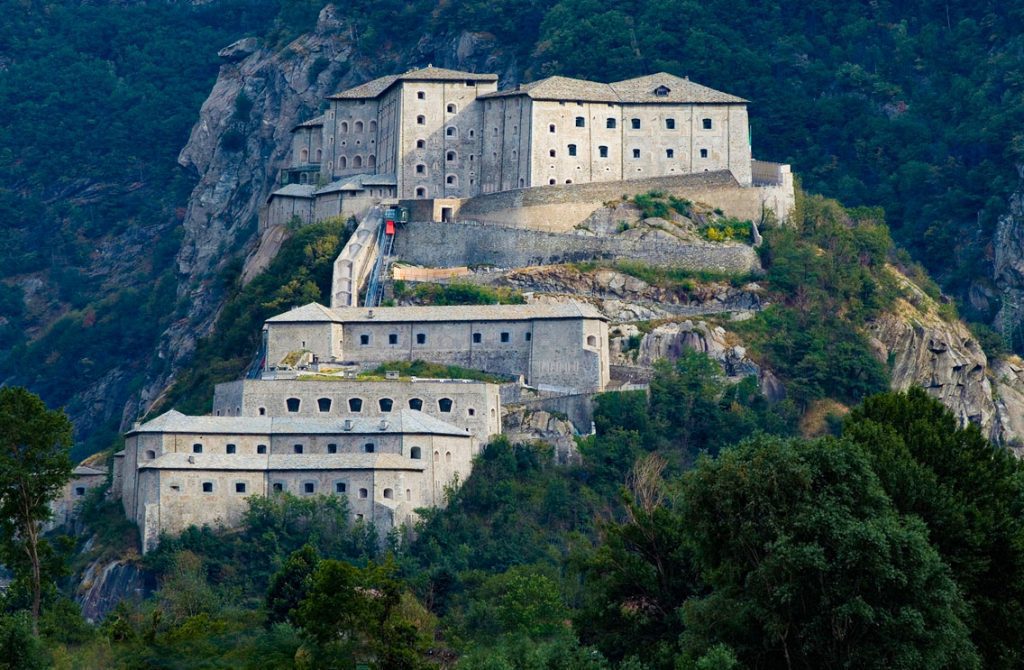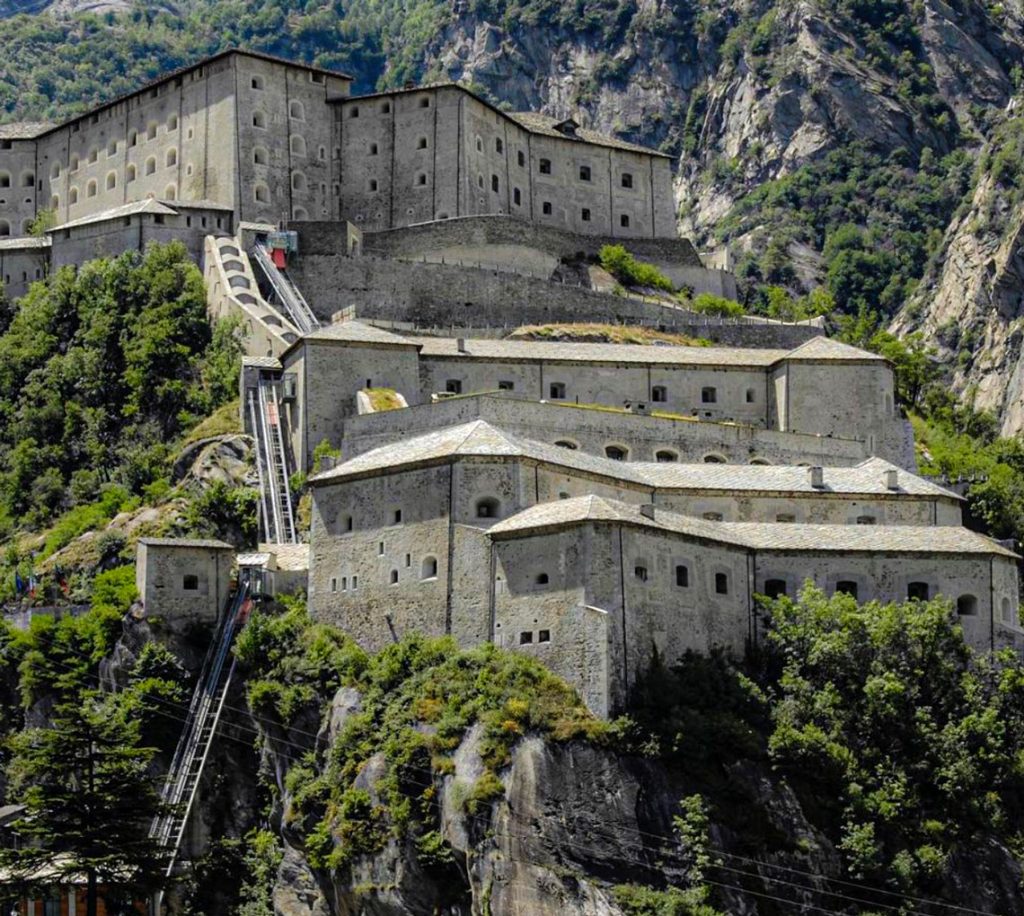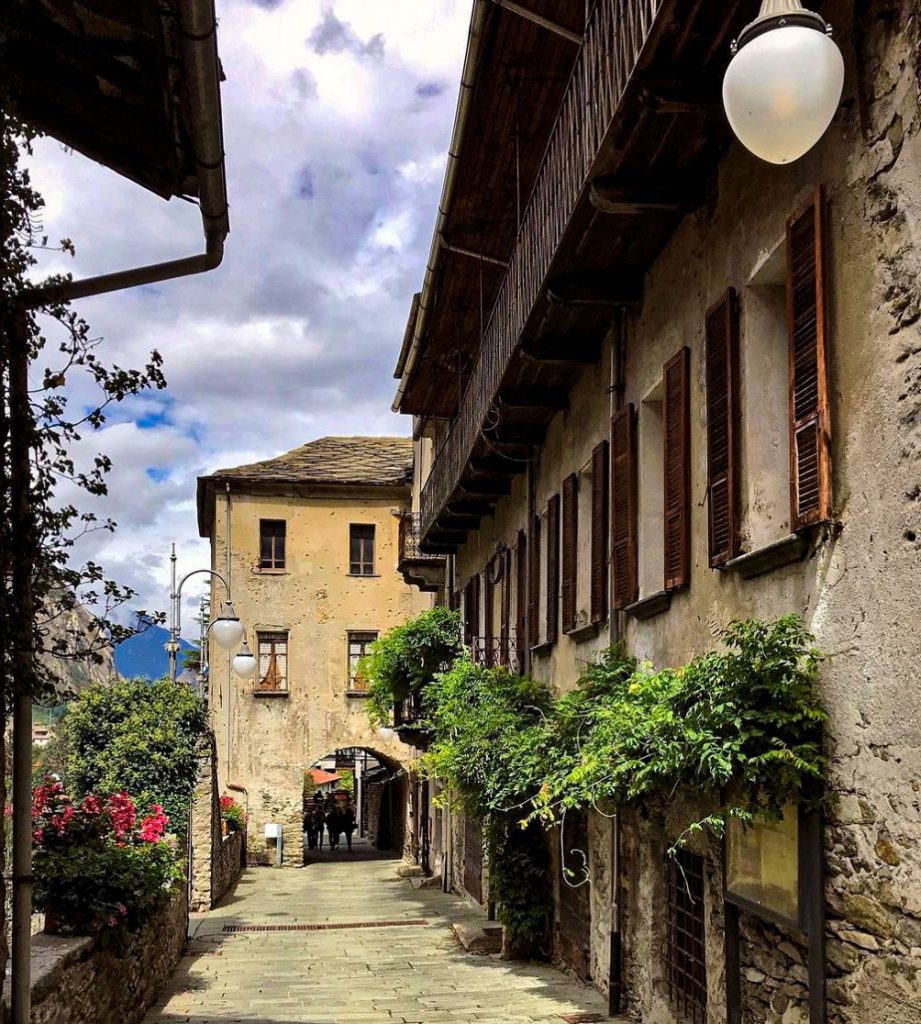Valle d’Aosta is not loved only for its marvellous mountains and winter sports, it collects testimonials of history and culture in its hundred castles and noble residences, dating from the Middle Ages to the Renaissance period.

Just 1 hour and half from Milan, between the villages of Verrès and Pont-Saint-Martin near the entrance to the valley, there is the medieval village of Bard, the smallest municipality in the Aosta Valley. This area has its roots in ancient times and is witness to historical periods. It was already populated in Neolithic and Roman times, the village was on the way of Via delle Gallie (a Roman consular road that connected the Po’ Valley to Gallia).
The village was for long years the domain of the Bard family, lords of the nearby valley of Champorcher, who exploited the decidedly strategic position of this place as a bulwark against the invasions. It is precisely the defensive fortress of Bard, clinging to the rock, the main attraction of the village.

Il Forte di Bard (Bard’s Fortress)
The building consists of various blocks and it is quite impressive because of its massive fortifications. Its architecture seems to come out from a book of fairy tales and blend perfectly with the surrounding nature and the rocky spurs of the high hills all around.
It is not surprising that the Fort has been selected to be backdrop for several key scenes in Marvel’s “The Avengers” Age of Ultron.

On its 3 square kilometers surface Bard manages to includes priceless treasures and has been inscribed among the most beautiful villages of Italy.

It’s an imposing monumental complex, one of the best examples of barrage fortress of the early nineteenth century. Built on the foundations of an ancient castle of the year 1,000, the Fort of Bard as we can visit it today, dates back to the mid-1800s. It can be reached from the center of the village by elevators or along a beautiful panoramic path that leads to the top of the fortress.

Reopened to the public after a period of neglect, the Fort is now a center of cultural ferment and houses important museums such as the Museum of the Alps, the Museum of Frontiers, the Museum of Fortifications, the Prisons of the Fort and The Children’s Alps Museum. In addition to these permanent routes, in the fort there are exhibitions of modern and contemporary art, as well as photography exhibitions and spectacular theatrical and musical performances.

From the perimeter of the fort it is also possible to enjoy a breathtaking view of the valley.
The official website

I was also amazed by the particularity of the medieval village of Bard with its alleys, stone houses and arches.

Take a walk along the main street and admire the beauty of its houses and courtyards, you can find buildings dating back to the XV and XVI century such as the noble Nicole’s palace, the Sundial House, the Bishop House, Valperga House, Ciucca House and Challant House.

What to taste in Bard
Valle D’Aosta is known for its food and wine delicacies and Bard despite being a small reality offers its typical culinary traditions. To be tasted the Valdostan chops and fondue, the Valdostan trout , lardo di Arnad, white polenta and typical bisquits Tegole Valdostane.

Two delicious recipes are cooked here mainly when events: le fiuor di cousse (pumpkin flowers stuffed and baked in the oven) and le paste di melia (biscuits made with corn flour). A riot of flavors and typicality.

Have a good trip 😉









